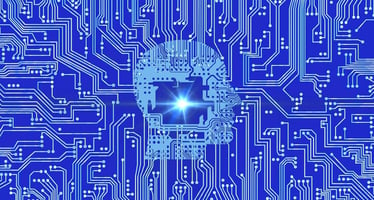With the Redmenta AI-cademy we would like to help teachers navigate the everchanging world of...
Redmenta AI-cademy: Can AI Replace Human Teachers?
With the Redmenta AI-cademy we would like to help teachers navigate the everchanging world of technology and artificial intelligence. One of the biggest concerns in education is whether AI will eventually replace human teachers.
According to UNESCO’s Sustainability Development report, access to quality education is a fundamental right everyone should have by 2030, creating a growing demand for qualified teachers. AI and robotics are being presented as a possible solutions, but we all know that being a teacher is more than just imparting knowledge to students. So, let's explore a few aspects and compare AI teachers to human teachers.

Efficiency
AI teachers can be faster and help speed up the teaching and lesson-planning process. They make fewer errors since everything is programmed into them, and they have access to a wealth of information. Plus, grading assignments is a breeze.
Cost
While developing AI and robotics can be a long and expensive procedure, it seems to be more cost-efficient in the long run, since there are no salaries or bonuses to calculate with. Yes, robots require equipment or maintenance but these are not monthly expenses, and the subscription fees for AI-powered teaching software are getting more and more affordable.
Adaptability
Learning and teaching with AI can take on many forms, but none are as fascinating as adaptive learning. This approach aims to provide students with personalized learning experiences that fit their unique needs. Whether it's through adaptive pathways, feedback, or content, adaptive learning ensures that each student receives the education they require to succeed. Still, a key part of good teaching is the human capacity to improvise. Teachers adjust what they do according to the circumstances, and teaching requires acts of creativity, innovation, and spontaneity.
Human connection
Another important factor is good teachers' personal connections with their students. AI could never fully replace this relationship; the warmth, empathy, and connection from real human interaction. Several studies show how a positive teacher-student relationship can not only lead to better academic results but also personal development. These connections can even tie into their social-emotional learning (SEL) curriculum. By fostering autonomy and self-determination, teachers can help students develop self-regulation skills that will serve them well in all areas of life.
In conclusion, educators should not see AI and robots as a threat but rather as an opportunity that could assist them. Robots cannot substitute human emotions, connection, creativity, and inspiration but can help us provide our children with the best education.



